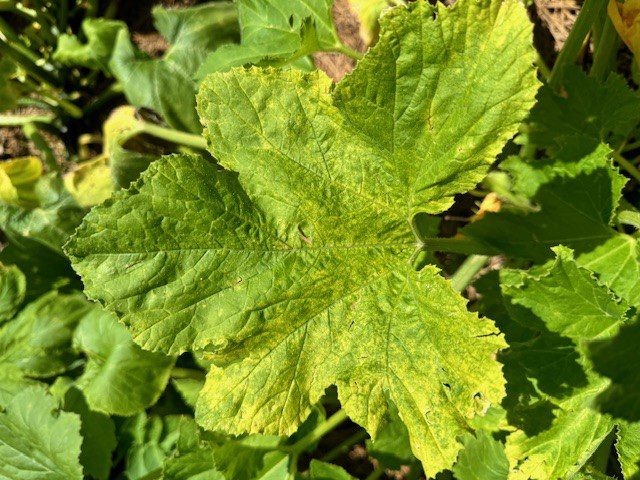Crop Production

Symptoms of virus diseases are starting to appear on squash and other cucurbit crops in commercial fields and backyard gardens. Alabama is unfortunate in that at least four aphid-transmitted viruses are active in the state annually.
Common Alabama Viruses
The most common viruses in Alabama would be cucumber mosaic, papaya ringspot, watermelon mosaic, and zucchini yellow mosaic. Symptoms are similar and typically include wrinkled, distorted leaves that exhibit a mosaic or mottled colored leaf pattern (yellow intermingled with dark and light green tissue).
It is not uncommon for a plant to be infected with more than one virus. Squash plants can be infected at any growth stage. Once infected, the virus spreads systemically within the plant. Plants infected early in their development are most severely affected and can be stunted with shortened internodes resulting in a bushy appearance to the plant canopy. The fruit can also show symptoms that can include smaller, deformed, mottled fruit that sometimes appear knobby.
Mosaic Virus Management
The most effective way of managing mosaic virus diseases is by using resistant varieties. Managing aphids with insecticides is generally not effective for reducing the spread of these particular plant viruses. When feasible, removing virus-infected plants early in the season can help reduce the spread of the disease within a planting. Growers should also consider planting earlier in the season to avoid high aphid populations as these insects typically increase in number as the growing season progresses.

